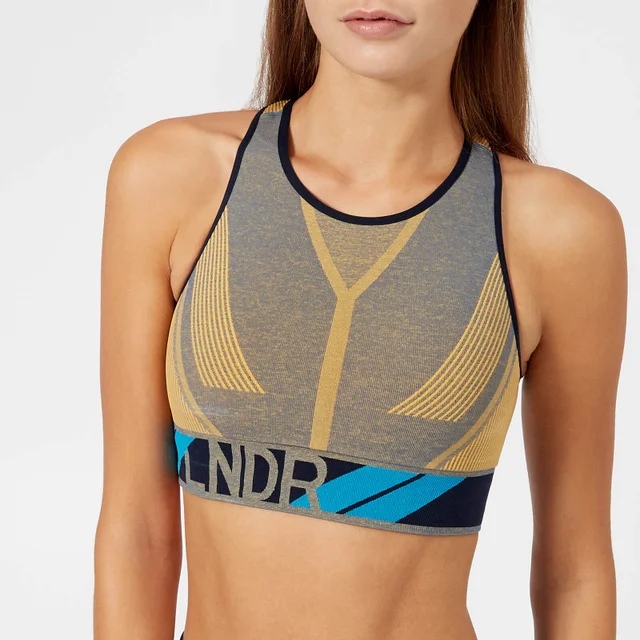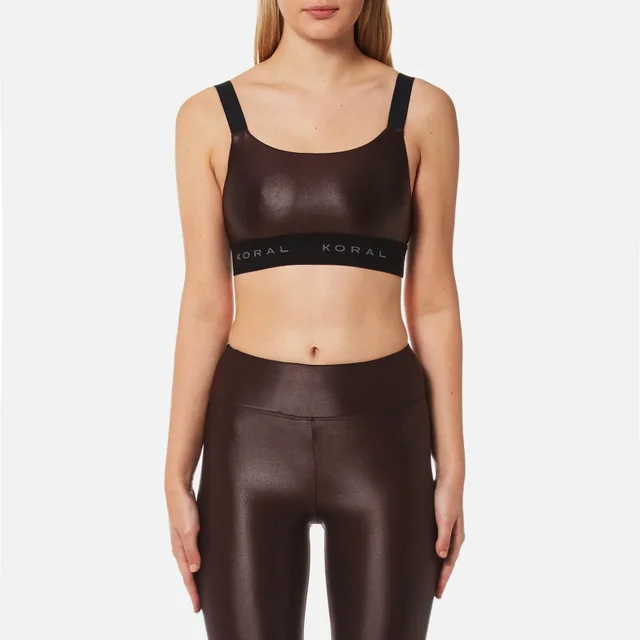How to Choose your Perfect Sports Bra

It’s no secret that athleisure is a thing. Women are continually deciding to shun conventional daytime apparel in favour of sportswear that doubles up as fashion-wear, opting for leisurewear suitable for their morning sweat session that effortlessly doubles up as a fashionable statement piece.
A key component of nailing the luxe-athleisure trend is finding a sports bra that not only compliments the rest of your ensemble, but also utilises technical fabrics and ergonomic design to ensure optimum sporting performance can be achieved. Below, we discuss everything ‘sports bra’ – from fit, to fashion, to function, with our comprehensive guide any worries about how to choose a sports bra should be eliminated.
.
Why Wear a Sports Bra?
The Shock Absorber Sports Institute (SASI) at Portsmouth University carried out a comprehensive study that concluded nearly 10 million women in the UK are not using structurally sufficient sports bras when exercising, resulting in inadequate breast support. An average breast can weigh up to 300g and unsupported movement enables a three-dimensional plane of movement. Taking running as an example, breasts can move as much as 4 inches in each direction with every stride. A good sports bra can cut this movement in half, somewhat key to maintaining healthy and pert breast tissue. If you’ve ever exercised without a technically designed sports bra, then you may be familiar with the discomfort or chafing unsupported high impact movement can cause. Those feelings of discomfort are a result of the Cooper’s ligaments (the connective tissue that helps to maintain structural integrity within the breast) being strained, which can result in irreversible sagging. Once stretched, the Cooper’s ligaments will never revert to their original position due to the absence of muscle within the breast, meaning the skin is far more prone to sagging.
What Sports Bra is Best for me?
Buying the right sports bra goes beyond simply knowing what size you require. It is incredibly important that you know the impact your sports bra is required to withstand, what style is most comfortable for you, and when it’s time to replace your sports bra.
How do I Measure a Sports Bra Size?
To find your band size, wrap a tape measure around your body, just under your breasts. Don’t pull the tape too tight and ensure the tape lies flat around your body the whole way round.
For your cup size, measure from the centre of your breastbone, across your nipple and stop of the side of your body where the breast tissue ends.
Combine the breast size above with your usual clothing size to make an educated decision about which size will be the best fit for you. Generally, the waistband on an XS sports bra will correlate to a size 8, a S to a 10, a M to a 12 and a L to a size 14. However, if you are a size 8 with a larger cup size you will definitely need to size up to accommodate this.
Which Sports Bra is Best for Large Breasts, and which for Small Breasts?
Cup size AA-B – Due to your smaller cup size, you should be able to wear a vast array of styles as you don’t need to be too concerned about specific supportive fabrics or construction holding your breasts in place.
Cup size C-DD+ – Cooper’s ligaments are the breast tissue that support your breasts, and once stretched will never fully return to its original position. To ensure you prevent any irreversible damage to these ligaments when exercising, ensure you choose a bra with the right level of support for your larger breasts. Choose a bra that is both supportive, and comfortable, such as the
What Sports Bra is Right for your Activity Level?
Low intensity – e.g. walking, yoga, Pilates. Low impact sports bras are normally made from thinner material, with thinner straps and less compression. This is your chance to wear the most flattering style for your shape as function is less important. Try the
Medium intensity – e.g. spinning, weight training, circuit training. The higher the impact, the more support required both in the construction and the fabrication of your bra. For medium impact sports look for features such as adjustable straps, under wiring and ergonomic flatbed seams.
High intensity – e.g. running, HIIT, skipping. For extra high intensity sports, function and stability is key to ensure minimal damage is done to Cooper’s ligaments. However, high support doesn’t mean compromising on style. Coggles recommend the Koral Ace Sports Brafor high performance workouts.
How Should a Sports Bra Fit?
Now you know your sports bra size and functional needs, now ensure that you know what to look for when finding the perfect fit.
Snug, but not restrictive – make sure your sports bra feels tighter than your regular bra. Sports bras are designed to be slightly compressive, so if you aren’t used to wearing one the tighter feeling around your chest may feel strange at first. As long as you can comfortably fit one finger under the band then your sports bra shouldn’t feel too tight.
Puckering should not happen – If the fabric of the cup or waist band puckers or wrinkles then this can be a sign that the bra is not the right size. The waistband of the bra should sit flat against your body and remain level all the way round. A waistband that does not remain secure or rides up when exercising is an indicator that your bra is too big.
Ensure straps are adjusted – If your chosen sports bra has adjustable straps, make sure these are modified to your preference before beginning your exercise to ensure ideal comfort and minimal breast movement.
Try moving – Although you want to buy a sports bra that looks great, it’s also important it will withstand the exercise required. When trying on, try to imitate some of the common movements of your chosen sport to ensure the fit and comfort are both optimal.
Choosing your Style of Sports Bra
Encapsulation vs. Compression – Encapsulation sports bras provide additional support as each breast is held in a separate cup, more like a conventional underwired bra. Compression bras are usually best for smaller cup sizes, or for women with larger cup sizes engaging in a low to medium impact activity.
Racer Back vs. Straps – Racer back bras tend to be more supportive as they hold the bra in place across the shoulders and all the way down the back, providing additional support for back muscles and shoulder blades during certain exercises.
When do I Need to Replace my Sports Bra?
If your bra begins to become uncomfortable or chafe, this can be an indication that the elastic within the waistband is becoming worn and the bra will not function as intended any more. A general rule-of-thumb is that a sports bra has a life span of between 30-40 washes.




















